

Dear Members:
September is National Prostate Cancer Awareness month. It’s a good time to reflect on our prostate cancer journey and give thanks for the blessing of proton therapy which we all received.
I can vividly remember the day I learned I had prostate cancer. I wrote about it in my book. It was August 10, 2000 and we were vacationing in Nantucket, just a few days after my third biopsy—the first two were negative. I was checking phone messages at home and learned the bad news from a message left by my urologist. In my book I wrote: My heart pounded; my mouth went dry; and all the color went out of my world. All of a sudden, everything was moving in slow motion.
Nothing else in my life seemed to be important anymore. As the opening quotation suggests, all of a sudden the only thing that mattered was to find a way to be cancer free. Little did I know at the time, the diagnosis of prostate cancer would set my life on a whole new path, one that would introduce me to a revolutionary technology, an extraordinary medical institution, and exceptionally competent and caring medical professionals and administrative staff, all of which would change my life forever.
10th Anniversary Celebration
About halfway through my treatment at Loma Linda University Health in late 2000, an event was announced that caught my attention. It was the tenth anniversary celebration of the opening of their proton treatment center. My wife, Pauline, and I decided to attend, and we were so glad we did. If I had any doubts about whether I had made the right treatment decision, they were dispelled that day.
The atmosphere was festive; the weather was perfect; and there were people there from all over the world, mostly former patients who had benefited from proton therapy. The theme for the event was “A Celebration of Life.” At that time, LLU Health had treated close to 6,000 patients.
The event lasted all day; there were tours and entertainment, and the celebration culminated with presentations in the Wong Kerlee Center in the Coleman/Chan Shun Pavilion. There were about 600 former patients and others in attendance. The auditorium was packed when volunteers marched in holding flags representing every country whose residents had benefited from proton therapy at LLU Health. When the parade ended, brightly colored flags representing dozens of countries lined the auditorium.
Dr. J. Lynn Martell was the Master of Ceremonies. Dr. James Slater, the pioneer of proton therapy, reviewed the history of proton therapy at LLU Health and told us of some of the challenges he and his team faced (They were daunting!). Dr. Jerry Slater spoke about recent developments in proton technology and future plans. Phil Livdahl, the chief physicist on the project and later the first prostate cancer patient to be treated, was also a speaker (Phil would later become a member of the BOB). U.S. Congressman Jerry Lewis spoke about his partnership with LLU Health that helped fund the project. And golfing great Ken Venturi spoke of his own personal experience of treatment and healing thanks to LLU Health and the proton beam.
Several former patients who benefited from proton therapy stepped to the podium to tell their stories. One young woman, Jennifer Gardner, spoke of her cancer diagnosis. Surgery alone was not enough. Along came proton therapy. It is now 18 years later and she is alive, cancer free, and working at LLU Health in the emergency department. More of her story can be found in this month’s BOB Tales.
A mother and father spoke of their son’s diagnosis years earlier. He had had a donut-shaped tumor wrapped around his brain stem. Doctors attempted to remove it surgically, but failed. “Take your son home and hug him,” their local doctor said to the parents. They refused to accept the prognosis. The answer, once again, was the proton beam at LLU Health.
The son spoke next. He told us he was cancer free, several years after proton treatment and he was then president of his senior class in college. Today, fifteen years later, he is still cancer free and studying to become a Rabbi.
Near the end of the program, Dr. Martell asked those present who benefited from proton therapy to come to the front of the auditorium. We all squeezed ourselves onto the stage. Baritone Wayne Shepperd then sang, “The Power of the Dream,” and there wasn’t a dry eye in the house. That day will be forever etched in my memory.
25th Anniversary Celebration
This year LLU Health will be celebrating the 25th anniversary of the opening of their proton treatment center. Many of the details are in this month’s BOB Tales. Deb and I will be there and will be participating in several of the events. We hope to see both current and former proton patients from around the world at the celebration, including patients treated at other proton centers who benefited from the pioneering work of Dr. Slater and his team.
I suggest you register for the event soon and book your travel and hotel accommodations, as they are expecting a large turnout. Once again, you do not have to be a former LLU Health patient to attend. You may want to bring a relative or friend who is researching treatment options, not only for prostate cancer, but for any of the many cancers and diseases treated with proton therapy.
.jpg) Deb and I are looking forward to meeting many of the people with whom we have been communicating for the past several months and years, along with our many old friends from the past.
Deb and I are looking forward to meeting many of the people with whom we have been communicating for the past several months and years, along with our many old friends from the past.
I hope you enjoy this month’s BOB Tales. As always, we welcome your feedback and suggestions for future newsletters. Just send an email to [email protected].
Bob Marckini
To print the BOB Tales newsletter or view the newsletter with a larger font size, click here for the PDF file.
Membership:
We have more than 8,000 members from all U.S. states and 39 countries. Members represent all operating proton centers in the U.S. as well as four proton centers in Europe and Asia.
In this Issue:
- Prostate cancer diagnoses are down — not good news?
- Proton therapy will soon be even more precise
- Diet and prostate cancer
- September is National Prostate Cancer Awareness Month
- Why Loma Linda residents live longer than the rest of us
- LLU Health’s 25th proton anniversary celebration and patient homecoming event
- Calling all significant others!
- Giving back: Where your money goes
- Counteracting rising obesity rates
- This nut has fewer calories than you think
.jpg)
Bad News: Prostate Diagnoses Are Down
The number of newly diagnosed cases of prostate cancer has dropped by nearly one-third over the past five years. So, why is this “bad news?” Because, according to a study conducted by Vanderbilt Medical Center, and published in The Journal of Urology, the reduction is due primarily to the implementation of a draft recommendation of the United States Preventive Services Task Force (USPSTF) to stop routine PSA screening.
A Big Concern
“I had concerns about the new guidelines from the get-go,” Dr. Daniel Barocas, lead author and assistant professor of Urological Surgery and Medicine at Vanderbilt University Medical Center, told DOTmed News. “Prostate cancer is not a trivial disease and it’s not a good idea to manage it with such a blunt instrument [as the USPSTF guidelines].” He noted that under the prior protocols, the national death rate from prostate cancer had declined by 40-50 percent.
The USPSTF issued the draft guidelines in October 2011 after concluding that the harm of PSA-based screenings outweighed the benefits, especially the over-treatment of low-risk prostate cancer commonly associated with aging. But the recommendations were controversial as some studies show PSA screening saves lives.
Barocas and his research team found that one year after the USPSTF draft recommendations, diagnosis of new low-risk cancers dropped almost 40 percent. New diagnoses of high-risk prostate cancers dropped 23 percent and new intermediate risk cancers dropped 28 percent. Prostate cancer is the second leading cause of cancer deaths in men, at roughly 30,000 per year in the U.S.
Missed Opportunities
“What really concerns me are missed opportunities to diagnose important cancers in men who are young and healthy enough to be candidates for treatment, and who may benefit from early detection,” said Barocas.
“Our study now puts some numbers on the potential benefits and potential harms of the USPSTF draft recommendations. While it is probably beneficial to avoid diagnosing low-risk cancers, especially in older or infirm men, missing opportunities to diagnose higher-risk tumors could lead to delays in diagnosis, higher treatment burden, significant suffering and even death from prostate cancer.”
Our View
As we have said in previous BOB Tales, the problem has not been one of over diagnosing prostate cancer; rather it has been one of over treating prostate cancer. The decision to treat should be made by the patient and his doctor. This discussion cannot even take place if PSA screening is abandoned.
Proton Therapy Will Soon be Even More Precise
The known benefit to using proton therapy to destroy cancer is in its ability to deliver almost all of the radiation to the target tumor volume and minimal radiation to healthy tissue on the way in and out of the body. The only uncertainty in using the proton beam is precisely where the beam stops.
A new technology, developed by a team of researchers in the UK, will allow radiotherapists to achieve incredibly accurate proton CT images of the tumor volume.
Using proton CT will eliminate any uncertainty as to exactly where the beam stops according to the study and an article posted in Medical Press last month. This means that the same type of precise radiation can be used to both image and to treat, and the precision of beam delivery will be even greater than it is today. This could allow physicians to deliver higher doses to the tumor and lower doses to surrounding, healthy tissue potentially improving cancer control and reducing side effects.
“It has been an extraordinary engineering feat—certainly the most complex piece of engineering undertaken at the University of Lincoln,” according to Professor Nigel Allinson, chief researcher on the project. When completed, the proton CT device will be “one of the most complex medical instruments ever imagined” according to researchers.
Diet and Prostate Cancer
Dr. Charles “Snuffy” Myers is a world-renowned prostate cancer treatment expert. He is also a prostate cancer survivor. A large portion of his patients have advanced or recurrent prostate cancer. We subscribe to Dr. Myers’ Prostate Forum Newsletter and regularly view his podcasts. Following is an excerpt from Prostate Forum Newsletter Volume 13 Number 9.
Question:
Many of us have a general understanding of the Mediterranean Diet, but could you give a list of the 10 - 20 foods to avoid at all costs and the 10 - 20 foods to be sure and eat on a regular basis?
Dr. Myers’ Answer: 
I will not give you ten of each, but I will list those I am most concerned about. You should avoid bacon and cured meats, corn-fed red meat especially if the surface has been burned, smoked meats, especially if they were done with a hot smoke, and flaxseed oil.
Dr. Myers is a fan of the Mediterranean diet, which involves the consumption of chicken and fish. He further states:
You should try to maximize your intake of vegetables, especially tomatoes and members of the cabbage family. Red, purple, and blue fruit should be a part of your diet, preferably on a daily basis. Your calories from carbohydrate should be matched pretty closely by your intake of protein and healthy fats.
Another Diet Question from Prostate Forum (Volume 15, No 9)
Dr. Myers’ guest contributor to this Prostate Forum Newsletter was Dr. Mark Moyad, professor of preventive and alternative medicine at the University of Michigan, and an acknowledged authority on the roles of diet, supplements, and other forms of integrative care in the prevention and treatment of prostate cancer. Dr. Moyad strongly believes that, “Whatever turns out to be heart healthy, 99 percent of the time is also prostate healthy. So if you’re ever going to get good guidelines or good advice on your prostate health, follow the heart-health guidelines.”
Question:
A lot of prostate cancer patients want to know which specific kind of diet they should follow. Is there one diet you recommend over others . . . Mediterranean, DASH, Paleo, or Zone-for prostate cancer patients?
Dr. Moyad’s Answer:
I don’t recommend one diet. Instead, I believe there are seven factors every patient should address. First, he needs to achieve four measurements: normal cholesterol, normal blood sugar, normal blood pressure, and normal weight. Then, he needs to stay away from tobacco, exercise regularly, and keep a moderate diet score.
Those seven factors sound ridiculously simple but may have a major impact on lowering heart disease risk. I believe any diet that helps you bring those four numbers into the normal range is the right diet for you. For some it will be a vegan diet, like the one promoted by Dean Ornish. For others, it’s a Mediterranean diet. Some patients adopt more extreme diets, like a ketogenic diet. It sounds awful, but they’re losing weight and their numbers are getting better.
Rather than making diet complicated, we should individualize it. We have to let people select a diet that fits their personality as long as they’re able to achieve the appropriate numbers.
.jpg) September is National Prostate Cancer Awareness Month
September is National Prostate Cancer Awareness Month
National Prostate Health Month is observed every September in the United States by health experts, health advocates, and individuals concerned with men’s prostate health. Designating a month for the issue serves the purpose of:
• Increasing public awareness of the importance of prostate health;
• Providing easily accessible prostate health screenings;
• Educating about risk factors and symptoms of prostate-related diseases and;
• Advocating for further research on prostate health issues.
As we approach September 2015, we urge our members and friends to make an impact on men’s health by wearing a light blue ribbon or simply starting a conversation with at least one person about prostate cancer prevention, risk reduction, and a discussion of available treatment options, including the major advantages of proton therapy.
Furthermore, with five to 10 percent of prostate cancers being genetic, our greatest opportunity is encouraging a proactive approach to prevention and risk reduction years before screenings start—talk to your family members; your sons and brothers.
You may also want to go as far as requesting the participation of your local hospital, cancer center, or urology clinic. Ask them to join your efforts by lighting their building blue or posting light blue ribbons on doors and windows for the month of September. And finally, urge them to participate in building awareness through social media (e.g. website and Facebook profile).
In this month’s Member Spotlight section, you’ll see how some of our members are already increasing public awareness about prostate cancer—and proton therapy—in a variety of ways. If you feel your proton therapy treatment was a positive experience resulting in improved or continued good health, please “pay it forward,” expecially this month, by educating others about prostate cancer detection and prevention.
If you have a unique idea for how to build awareness about prostate cancer and/or proton therapy, please email [email protected]. We may share your idea in a future newsletter, our website or our Facebook profile.
Why Loma Linda Residents Live Longer Than the Rest of Us
Although lots of communities have centenarians, Loma Linda, California has been designated a “blue zone” by National Geographic as one of the five longest-living communities in the world. Residents of Loma Linda are 10 times more likely to make it to 100. The reason? Loma Linda is not a general population community as it encompasses different values and a different lifestyle centered around the Seventh-day Adventist Church. Seventh-day Adventist culture is focused on healthful habits including a vegetarian or vegan diet and they abstain from alcohol and caffeine. Furthermore, to optimize health many Adventists follow eight basic principals for a healthy lifestyle: fresh air, sunshine, abstemiousness (restraint in the consumption of food), rest, exercise, water, nutrition and trust in Divine power.
.jpg) LLUH’s VP, Wholeness, Follows Suit
LLUH’s VP, Wholeness, Follows Suit
Loma Linda Health’s Vice President, Wholeness, Danny Fontoura, and his family were recently featured in an article in the L.A. Times. Like many others in their community, the Fontouras treat their bodies “like a temple” by eating little or no meat or fish, not smoking or drinking alcohol, getting plenty of exercise every day, and living life with a sense of purpose. The family goes to church every week and often gathers with other families on the Sabbath to relax and rejuvenate.
Fontoura’s Work
Fontoura’s job is to think strategically and deliberately on how the hospital and college programs can share what they’ve learned about health.
“I think we view our church as blessed with a special health ministry,” he says. “How do we impact the world in positive ways?” The Wholeness Institute, part of LLU Health, was created to be more deliberate in answering that question, being mindful of other faith traditions. One challenge is to figure out the factors that can accomplish the most—perhaps working to reduce hospital readmissions, reduce stress, and increase faith-based commitments.
A Wealth of Health Data
Loma Linda University, owned and operated by the Seventh-day Adventist Church, has collected mountains of data from thousands of people over decades in the Adventist Health Studies. One study of church members published earlier this year found that vegetarians were 22 percent less likely than meat eaters to be diagnosed with colon or rectal cancers.

LLU Health's 25th Proton Center Anniversary Celebration & Patient Homecoming Event
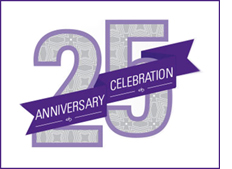 In celebration of LLU Health's 25th Proton Center Anniversary, all BOB members are cordially invited to the James M. Slater, MD Proton Treatment & Research Center Patient Reunion event on Monday, October 26, 2015.
In celebration of LLU Health's 25th Proton Center Anniversary, all BOB members are cordially invited to the James M. Slater, MD Proton Treatment & Research Center Patient Reunion event on Monday, October 26, 2015.
Although technology is constantly evolving, LLU Health's commitment to patients and their families remains the same. In fact, when Dr. James Slater came to LLU Health in 1970 to begin a Radiation Oncology Department, his guidance to his staff was simple, “treat patients like they are your own mother and father.” That charge was continued in 1990, when the proton treatment center was opened and it remains their foundation today.
Join LLU Health on October 25-26 for a whole host of activities with the capstone event being the Patient Homecoming Celebration. From reunion dinners to hikes, seminars, and tours, LLU Health has created a chance for you to re-connect with fellow patients, meet proton center staff, share your stories with current and former patients, and learn about the exciting plans for the James M. Slater, MD Proton Treatment & Research Center.
Be sure to register early and to book your hotel accommodations ASAP, as the anniversary celebration is expected to attract a large crowd.
Deb Hickey and Bob Marckini are looking forward to meeting and spending time with many members of the BOB who will be in attendance.
Please sign up for any of the following events you wish to attend at PROTONS.COM/25years or call 877-LLUMC-4U.
Patient Reunion Dinners
Sunday, October 25 | 5:30 – 8:30 p.m.
We invite you to share a meal and reconnect with fellow proton alumni patients and their families! If you are interested in joining, please sign up here. Enter your name and email address; choose a date range in which you were treated; then check “Patient Reunion Dinners” (and any other activities you are interested in) and click the “Next” button to continue.
Hike the Hills of Loma Linda
Monday, October 26 | 7:30 – 8:30 a.m.
Hike through picturesque hills of Loma Linda which will end in a gorgeous view of the Medical Center and the surrouding community.
Tour the Loma Linda University Children’s Hospital
Monday, October 26 | 9:00 – 10:00 a.m.
Loma Linda’s Children’s Hospital is growing more and more every day and still remains the leader in pediatric care in the region. Come see how they have expanded their care and are changing lives.
Healthy Relationships Seminar
Monday, October 26 | 10:00 – 11:00 a.m.
Addressing how cancer may be impacting us as well as our relationships is an important topic. Gabriela Gutierrez, MS, MFTI will speak about steps you can take to redefine healthy relationships while acknowledging the unique relational challenges cancer often presents.
Cancer-fighting Foods Demonstration
Monday, October 26 | 11:45 a.m. – 12:45 p.m.
Learn and taste! LLU Health's knowledgeable chefs and dietitians will show how to prepare foods that help to reduce cancer risk, heart disease, inflammation, and more.
Proton Documentary Screening
Monday, October 26 | 1:00 – 1:30 p.m.
Watch an amazing documentary about proton patient alumni and BOB member Pat Purcell and his journey with prostate cancer, protons, and a spring triathlon.
Proton History Wall Unveiling & Mixer
Monday, October 26 | 3:00 – 4:30 p.m.
See the unveiling of LLU Health's new proton history wall and learn their plans for the renovation of the patient wait areas at the proton treatment center.
Proton Homecoming Event
Monday, October 26 | 4:45 – 6:00 p.m.
Join LLU Health staff, friends, patients, and alumni as they celebrate 25 years of the healing power of protons! The event will begin with light hors d’oeuvres at 4:30 p.m.
Please sign up for any of the events you wish to attend at PROTONS.COM/25years or call 877-LLUMC-4U.

A Creative Way to Get the Word Out
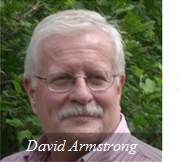 BOB member David Armstrong (Westminster, CO) has come up with a creative way to build awareness and educate others about proton therapy. He wrote an article about his experience with proton therapy as a LinkedIn publication from his profile. An excerpt is below.
BOB member David Armstrong (Westminster, CO) has come up with a creative way to build awareness and educate others about proton therapy. He wrote an article about his experience with proton therapy as a LinkedIn publication from his profile. An excerpt is below.
What if you, a loved one, or a friend were told you had cancer and in researching treatments you learned that one was available that was non-invasive, had a survival rate as good as or better than the other treatments, had much lower incidence rate of both short and long-term side effects, along with an improved quality of life? Would that be too good to be true? That was my situation.
Today is my eight-year anniversary of the start of proton beam therapy for prostate cancer. It was GOOD and it was TRUE.
David goes on to explain how proton therapy works, complete with graphs showing proton versus photon.
Read David’s story on LinkedIn.
Another Member Educates Others About Proton
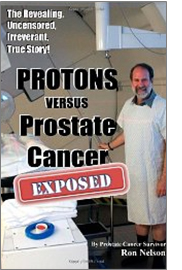 We’ve written about BOB member Ron Nelson (Irmo, SC) several times. Ron wrote a book about his proton therapy experience, “Protons Versus Prostate Cancer: Exposed.” In the book, he shares his most intimate experiences, feelings, reactions, concerns, and unique observations in a highly engaging, entertaining style. Ron holds back nothing, explaining exactly what receiving proton therapy for prostate cancer is like—not the science of it, but the step-by-step experience of being the patient.
We’ve written about BOB member Ron Nelson (Irmo, SC) several times. Ron wrote a book about his proton therapy experience, “Protons Versus Prostate Cancer: Exposed.” In the book, he shares his most intimate experiences, feelings, reactions, concerns, and unique observations in a highly engaging, entertaining style. Ron holds back nothing, explaining exactly what receiving proton therapy for prostate cancer is like—not the science of it, but the step-by-step experience of being the patient.
Ron has always been a supporter of proton therapy. He even created a website, “The After Proton Blog,” where he continuously writes about proton therapy, posting his own comments, links to videos and articles and health tips, all
with humor and a creative style.
Recently, Ron posted a blog response to a Wall Street Journal article about proton therapy which had a negative slant. Actually, Ron didn’t just respond to the article, he rewrote it. Ron begins:
What kind of feeling or impression would these words and phrases give you about a business—any business: balk, big bets, uncertain, dogged, lack of evidence, closed, losses, ridiculously expensive, behemoth, decline, taken a toll, money-losing, no guarantee, dispute, concerned, unproven, pricey, problem, bankruptcy? Let me guess: not so hot, right?
All of these words are used by an author at The Wall Street Journal in her May 25, 2015, article about proton beam therapy for cancer treatment. I’m not sure whether her spin on proton was intentionally negative—I have no reason to question her motives—but regardless of her intent or lack thereof, the article needs to be fixed.
I have no reason to doubt her facts. What I will do is reverse spin it 180 degrees the other way …
So I’m going to fix it by rewriting it. Let’s give the author the benefit of the doubt and stipulate that her actual data—the facts, as presented by her—is correct. I’m not going to fact-check the article because that’s not the point, and I have no reason to doubt her facts. What I will do is spin it 180 degrees the other way using no information other than what was included in her article.
Calling All Significant Others!
Years ago we put together a reference list of our members’ wives and significant others in order to create a support network of partners/caregivers. Recenlty we have had more and more requests from prospective proton patients’ significant others to speak with other patient partners/caregivers about how best to support their partners as well as how to cope with the dreaded cancer diagnosis of a loved one.
If you are the significant other or wife of one of our members and are willing to talk with others about your experience or simply be a support to others, please send an email to [email protected]. Thank you!
Reminder: Email Changed?
Please let us know if you have changed your email address or would like us to send the BOB Tales to a different or additional address (your spouse, a friend?). We will gladly update and/or add to the email address within your BOB profile. Just send an email to [email protected] and let us know.

Where Your Money Goes
A lot of our members ask where exactly their money goes when they make a contribution to proton research at Loma Linda University Health. Many think it goes directly to help others who have been diagnosed with prostate cancer and they are right. What many do not know, however, is that their contributions are also used to further proton therapy research in general, helping patients suffering from other types of conditions including breast cancer, lung cancer, acoustic neuroma, chondromas and chondrosarcomas, meningiomas, arteriovernous malformations, isolated brain metastases, pituitary ademas, uveal melanomas, nasopharynx, oropharynx, sarcoma of the paranasal sinuses, parameningeal rhabdomyosarcomas, and other pediatric conditions.
Following is a story about two young cousins and how proton therapy became their saving grace.
In the records of the department of radiation medicine at LLU Health, it is not uncommon to find patients who are members of the same family. It is unusual, however, to encounter two patients from the same family who were treated for two different types of brain lesions. That is the case, however, with Jennifer Gardner and Cheryl Bellerose, both of Redlands, California.
Jennifer Gardner
In 1997, when she was a teenager, Jennifer began experiencing headaches, vomiting, and unsteadiness in walking. She and her family consulted surgeons, including a pediatric neurosurgeon. They soon learned that she had a tumor in her brain. It was inoperable.
Jennifer required several surgical procedures to relieve hydrocephalus (fluid in the brain), including a ventriculoperitoneal (VP) shunt. Her case was referred to the department of radiation medicine. She was seen by two radiation oncologists then at LLU Health, one a specialist in pediatric oncology and the other a specialist in brain tumors. They decided that she was a candidate for proton therapy because her tumor, although causing distressing symptoms, was localized.
Jennifer was treated in the spring of 1997. Between proton therapy and her surgical procedures (nine altogether), she improved quickly. Jennifer says that she had no side effects from proton treatment and, in fact, pursued vigorous athletic activities during her treatment, including cross-country running, swimming, and surfing.
Follow-up examinations showed complete regression of her tumor and at this writing, 16 years later, Jennifer no longer needs to be followed regularly. She says that one of her main recollections of proton therapy at LLU Health was the superb team spirit she encountered among the radiation oncologists, nurses, and radiation therapy technologists she met in the department of radiation medicine. As an athlete herself, she appreciated this spirit, which included her as the patient. The feeling of all working together toward a successful treatment outcome was strong, so much so that, Jennifer says, it eventually altered her own life plans: she wanted to be part of the medical environment too.
Today Jennifer works at LLU Health as a medical assistant in the emergency department. She also works for American Medical Response as an emergency medical technician (EMT) and, at this writing, is seeking certification as a flight medic. She continues to be a highly active, athletic young woman.
Cheryl Bellerose
In 2002, Cheryl began to experience unexplained dizziness. She went to her doctor, who referred her to a neurologist. A work-up revealed that she had an acoustic neuroma, a benign tumor of the auditory nerve. She was referred to a surgeon who recommended an operation.
Cheryl and her family looked into several options and facilities, including centers in Los Angeles. However, Cheryl remembered her younger cousin, Jennifer. At the time of Cheryl’s diagnosis, Jennifer was already five years past proton treatment for a malignant brain tumor and was doing very well. This encouraged Cheryl and her family to look into protons for her case as well. They inquired and Cheryl was seen by Dr. Lilia Loredo in the department of radiation medicine. Dr. Loredo examined Cheryl and her records, including CT scans. She told Cheryl she was confident that proton therapy could be used successfully in her case and Cheryl felt confidence in Dr. Loredo’s judgment.
Cheryl then began a six-week treatment course of 30 fractions of proton radiation therapy. She says she experienced no side effects from treatment and, more importantly, no loss of hearing, either from the tumor or as a side-effect of radiation treatment.
 At the time she was treated, Cheryl worked at the Loma Linda University School of Dentistry. “My treatments were easy,” she says. “I worked right next door, so every day I would walk over to the hospital, get my proton therapy, and walk back to work.” Cheryl says she felt very comfortable with the treatment setting and personnel in the department of radiation medicine. “I loved the Christian atmosphere,” she says; “it was a good place to be.”
At the time she was treated, Cheryl worked at the Loma Linda University School of Dentistry. “My treatments were easy,” she says. “I worked right next door, so every day I would walk over to the hospital, get my proton therapy, and walk back to work.” Cheryl says she felt very comfortable with the treatment setting and personnel in the department of radiation medicine. “I loved the Christian atmosphere,” she says; “it was a good place to be.”
Cheryl has since retired from her job at the LLU School of Dentistry. She and her husband love to travel and live an active life, seeing various places and hiking in the nearby mountains.
Today, 11 years after her last proton treatment, she needs follow-up visits only every three years. The family connection in Cheryl and Jennifer’s cases goes on. Two of their uncles have received proton radiation therapy for prostate cancer.
Proton Therapy for Tumors of the Central Nervous System
In many respects, Jennifer’s and Cheryl’s situations were different: Jennifer had a malignant tumor that required several surgical interventions before and during proton therapy; Cheryl had a benign tumor that was discovered early. In both cases, however, their treatments called for radiation to the brain, and in both cases, protons offered a way to deliver that radiation without irradiating other parts of the brain.
Sparing tissue that does not need to be irradiated is what proton therapy is all about.
Because the beam can be conformed so closely to the volume that needs to be irradiated, Dr. Loredo and other radiation oncologists in the department of radiation medicine can deliver the high doses needed to control the tumor without causing radiation damage to nearby brain tissue. This is always important, but especially so when treating in the brain and even more so when treating children, whose tissues are still developing.
Both Cheryl and Jennifer reported no side effects from proton therapy. Both continued to lead active lives during treatment. This was made possible by the tissue-sparing capabilities of proton therapy. Although needed conformal doses of radiation can be delivered to brain volumes with modern forms of x-ray therapy such as IMRT, surrounding tissue cannot be spared from lower doses of radiation, as is the case with protons. It is this ability to spare tissue that helped prevent hearing loss in Cheryl’s case, and development problems in Jennifer’s.
The reason proton therapy is so advantageous in treating tumors in the brain and in children comes down to simple physics. Protons have mass; photons, the fundamental particles of x-ray beams, do not. Accelerated protons, therefore, are much less likely to scatter in tissue than photons are, so they can reach the target volume using fewer beams than are needed for photons. Further, protons do not release the bulk of their energy until they stop in the targeted tissue; at that point, they release all of their energy and no tissue beyond the target is irradiated. Photons release energy all the way to the target and past it. Taken together, these are the physical reasons that protons can spare normal tissue to a much greater extent than is possible with photons. The differences in dose distribution between proton and photon beams often are dramatic.
Dr. Loredo, who treated Cheryl and treats many of the CNS patients at LLU Health, perhaps describes the proton advantage best: “We want to destroy the tumor and allow normal tissues to keep functioning normally. The best way to do both is to conform the dose to the tumor cells and leave the rest alone.”
How to Support Proton Research
Make a Future Gift:
Contact Todd Mekelburg at the Office of Planned Giving at Loma Linda University Health at 909-558-5376 or email [email protected].
Donate to the Marckini Chair:
- Send a check made out to “LLUCC Proton” to Loma Linda University Health, Office of Philanthropy, P.O. Box 2000, Loma Linda, CA 92354. Memo line: “Marckini Chair.”
- Donate online or call Elvia DeHaro at 909-558-5010.
Other Ways to Give:
Contact Matt Miller at the Office of Philanthropy at Loma Linda University Health at 909-558-3582 or email [email protected].

Walking Gives Boost to Prostate Cancer Survivors
From Scientific American Health After 50 Alerts: Early-stage prostate cancer survivors may be able to improve their health-related quality of life by walking casually (about 2 mph) at least three hours a week, says a study out of Northwestern University in Chicago.
Researchers tracked 1,917 men treated for prostate cancer an average of eight and a half years earlier with surgery, radiotherapy, hormone therapy, or active surveillance. When compared with more sedentary survivors, the walkers had significant improvements in depression, body-weight issues, and fatigue, all of which were side effects of their cancer treatment. Even men who walked only one and a half hours a week, but at a faster pace (3–3.9 mph), saw similar health benefits. But, men who walked less than 90 minutes a week at an easy pace didn’t see the same gains, suggesting that there is a point where too little exercise no longer provides the same benefits.
Counteracting Rising Obesity Rates
According to the most recent National Health and Nutrition Examination Survey:
- 40 percent of men are overweight.
- 37 percent of women are overweight.
- 35 percent of men are obese.
- 30 percent of women are obese.
The obesity rate in the U.S. has increased over the past two decades. This high obesity rate and its relationship with other chronic diseases, including cancer, is not new information to public health scientists and physicians.
New research published last month by JAMA Internal Medicine and reported by Kaiser Health News, suggests that prevention strategies exist that could counter this alarming trend.
Primary care physicians are seen as a major factor in helping to change behavior and treat obesity. Part of the problem according to the lead researcher, is that clinicians are not talking enough with their patients, and when doctors see patients, they aren’t sufficiently counseling them on the ways they can change their lifestyles.
Changing behavior in schools and the workplace and changing physical environments to make healthy food and exercise options more accessible are also needed according to the study.
Dealing with obesity in the U.S. through diet and lifestyle can save lives.
 This Nut Has Fewer Calories Than You Think
This Nut Has Fewer Calories Than You Think
From Dr. Robin Miller [email protected]: Nuts are full of healthy mono and unsaturated fats. But most nuts are also high in calories. However, pistachio nuts are both heart-healthy and they have fewer calories than you might think.
In a recent study, researchers found that the caloric values in pistachios are lower than other nuts and also, that the body does not absorb all the calories in pistachio nuts.
In a study where participants took 20 percent of their calories as pistachios, they saw a significant improvement in their cholesterol profile
A handful of pistachios makes a quick and healthy snack.
Series: Top 20 Most Common Health Questions
Last year, we began a series on the top 20 most common health questions (and answers) from Business Insider Magazine. Here is another question from that list.
Do whitening toothpastes whiten teeth more than regular toothpastes?
Short answer: No. Whitening toothpastes usually contain peroxides and other strong abrasives that might make your teeth appear whiter by removing stains. Unlike at-home whitening strips and gels that contain bleach, these toothpastes do not actually change the color of your teeth.

Bob Marckini’s book, “You Can Beat Prostate Cancer And You Don’t Need Surgery To Do It,” is listed in the No. 3 position on a search for “prostate cancer” on Amazon.com (all departments) out of 44,889 search results at the time of this writing. Within the “books” department, the book is listed in the No. 3 position on a search for “prostate cancer” out of 30,152 search results.
The book has 226 reader reviews on Amazon—more than any other book in the top 50!
Here is an excerpt from what one reader recently had to say:

As I write this review, I’m at my oncologist’s office waiting to be seen for a check-up. My latest PSA is 1.04! My proton therapy ended last month. I loved Bob’s book. It covers all the bases and tells you all the things you need to do to get prepared for handling a diagnosis of prostate cancer. I’m a bit biased since I was working at Loma Linda University Health when they built the proton accelerator and began successfully treating prostate cancer patients … and I’ll never regret choosing proton therapy!
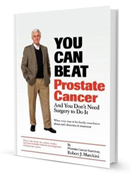 More Information / Where to Buy the Book:
More Information / Where to Buy the Book:
Paperback: $19.00--·--Kindle: $9.99--·--NOOK Book: $9.99--·--Apple iBook: $9.99
Proceeds from book sales help fund BOB efforts and support proton therapy research.
Ask about our bulk discount for paperback books: [email protected].
If you found Bob’s book helpful in making your proton treatment decision, please post a review on Amazon. Once you are logged into your Amazon account, click here and click “Create your own review” button. Don’t forget to rate the book from 1 to 5 stars!

Estate Planning Hints
BOB Member Ron Hendricks is Director of Gift Planning for Trinity Western University. He regularly copies us on his “News from Ron” mailings, which are helpful hints on estate planning to the readers of his newsletters. We have found Ron’s suggestions to be timely and beneficial. With his permission we periodically share some of his wisdom with our membership. This segment is called “Planning for Probate.”
How can you avoid probate?
Generally, most individuals can avoid probate for a large portion of their assets. The probate process is important because when a person passes away, his or her property must first be used to pay bills, expenses and debts. An executor or personal representative is appointed to gather an inventory of all assets, conserve assets for all beneficiaries and make certain to carry out the decedent's intentions as written in his or her will.
The probate process specifically applies to assets transferred under your will. However, many types of assets are transferred through other means. Trusts, IRAs and insurance are subject to the terms of the agreement or beneficiary designation. Property held in joint tenancy with right of survivorship is transferred to the survivor whose name is on title. Transfer upon death, Pay-on-death and other types of accounts can also avoid probate. However, all parts of your entire plan need to work together. When a plan has not been carefully developed to meet your goals, there may be an expensive and heart-rending fight over property by your heirs. A good plan will give one of the best possible gifts to your family—the gift of peace.
Wills and Trusts
Do you have a will? Is it current? You should review your will periodically and discuss your plan with your attorney. If you have a substantial estate, a will with a trust may be appropriate. Because a will does not provide for your care in a medical emergency, you will want to make sure that your estate planning includes a will, a durable power of attorney for healthcare and a living will to handle end-of-life issues.
You Won’t Believe This … Until You Try It
Unlock Your Car with Your Brain
Once you have seen this you will be heading out to your car to see if it works. This is a useful piece of knowledge, tempered with humor. So much for the old saying, “You have water on the brain.”
If you are constantly forgetting where you’ve parked your car, this amazing trick may help. You can get your car horn to signal your car’s location from a great distance. We have tried it several times and it works. And guess what? PROTONS are involved!
 You’re Missing Out!
You’re Missing Out!
Facebook offers us the opportunity to interact with an extraordinarily expansive universe of people—people beyond our community of 8,000 members. By connecting with friends on Facebook and thus connecting with their Facebook friends and their Facebook friends (and so on), we are leveraging our proton message exponentially.
Plus, we research and we post stories as they happen.
You may not learn about breaking proton news until our next newsletter is issued which could be weeks later, but our Facebook fans know immediately! Plus, we share personal member stories, photos and quotes which we may not share in our newsletter. We also encourage fans to comment on and share our posts with others.
Every day we are seeing more and more “post shared” notices which means our messages are being seen by thousands of others who may not be aware of proton therapy. Thank you, BOB Facebook fans!
If you are not on Facebook, join now and become a BOB fan. If you are already on Facebook, visit the BOB page and click the “like” button to become a BOB fan. Encourage your friends to do the same. Help us reach 1,000 fans by 2016!
Did You Know?
- It takes 40 gallons of maple tree sap to make one gallon of maple syrup.
- Peanuts are not nuts; they are members of the legume family. Legumes are a class of vegetables that includes beans, peas, and lentils.
- West Africa produces 70 percent of the world’s cocoa.
.jpg) Educate Others in Traffic
Educate Others in Traffic
Build awareness about proton therapy with a BOB bumper sticker. Just send $6.00 to Bob Hawley: P.O. Box 45, Mt. Angel, OR 97362 and he’ll mail you one. Or, email Bob at [email protected].
All proceeds go to the Robert J. Marckini Endowed Chair for proton therapy research at LLU Health.

Last Month’s Brain Teaser
How many patients, worldwide, have been treated with proton therapy?
Answer: More than 120,000. According to the Proton Therapy Co-Operative Group (PTCOG), 118,181 were treated through 2014. By mid 2015, more than 120,000 would have been treated.
Winner: Wayne Swartz, Uniontown, PA
BOB member Wayne Swartz had proton treatment for his prostate cancer at LLU Health in 2002. “My PSA and other scores were high,” he told us. “But treatment was trouble-free—no muss; no fuss; no blood; no meds … not even an aspirin.” Thirteen years later at age 71, Wayne’s PSA is low and steady. He stays active by physically handling about 13,000 bales of hay each year. “Many horses in a three-county area are happy that my prostate cancer was cured,” Wayne says. And the best part of proton treatment? Wayne tells us, “I have not spent one dollar on medicines or follow-up procedures in my 13 years post-proton treatment. I have friends and colleagues who have had other modes of prostate cancer treatment and they all had follow-up treatments with much expense and physical problems.”
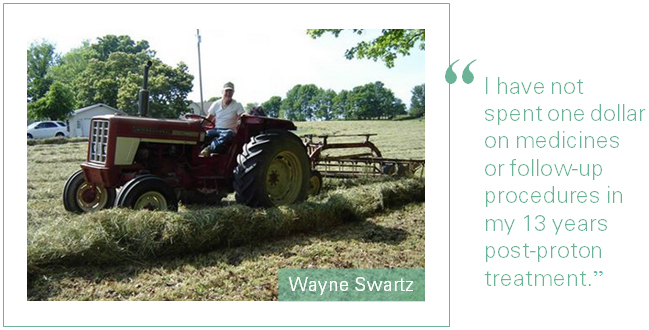
.jpg) New Brain Teaser
New Brain Teaser
The photo on the right was taken in 1959 at Sacramento State College. One of the individuals in the photo is known by most of us.
Can you identify which one it is and give us his name?
The first person with the correct answer will receive a signed copy of Bob’s book.
Hints: 1) If you were treated at LLU Health, you have a better chance of getting the correct answer; and 2) if you’ve seen him play golf you would agree with us—he should stick to boxing!
Answer next month: Send your brain teaser answers to [email protected].
Why Seniors Still Need Newspapers
I was visiting my son last night when I asked if I could borrow a newspaper.
“This is the 21st century dad,” he said. “We don’t waste money on newspapers. Here, use my iPad.” So I did.
I can tell you this … that fly never knew what hit him.
Hearing Problems
An 80-something husband was very worried because his wife’s hearing was deteriorating. So he decided to see how bad it was.
While she was knitting, he walked up behind her and, in a soft voice said, “Would you like a cup of tea, honey?” And he heard no response.
The second time he spoke much more loudly, “Honey, would you like a cup of tea?” Still nothing.
Finally he shouted, “WOULD YOU LIKE A CUP OF TEA?”
His wife turned around and said, “For the third time, NO THANKS!”
Quote of the Month:
‘Just remember, once you’re over the hill you begin to pick up speed.’ ―Arthur Schopenhauer

 Always Remember Those Who Serve Us in Life
Always Remember Those Who Serve Us in Life
From Great Lessons in Life: In the days when an ice cream sundae cost much less, a 10 year old boy entered a hotel coffee shop and sat at a table. A waitress put a glass of water in front of him.
“How much is an ice cream sundae?” he asked.
“Fifty cents,” replied the waitress.
The little boy pulled his hand out of his pocket and studied the coins in it. “Well, how much is a plain dish of ice cream?” he inquired.
By now more people were waiting for a table and the waitress was growing impatient. “Thirty-five cents,” she brusquely replied.
The little boy again counted his coins. “I’ll have the plain ice cream,” he said.
The waitress brought the ice cream, put the bill on the table, and walked away. The boy finished the ice cream, paid the cashier, and left.
When the waitress came back, she began to cry as she wiped down the table. There, placed neatly beside the empty dish, were two nickels and five pennies. You see, he couldn’t have the sundae, because he had to have enough left to leave her a tip.
Low PSAs to all,
Bob Marckini and Deb Hickey
To print the BOB Tales newsletter or view the newsletter with a larger font size, click here for the PDF file.
NO MEDICAL ADVICE: Material appearing here represents opinions offered by non-medically-trained laypersons. Comments shown here should NEVER be interpreted as specific medical advice and must be used only as background information when consulting with a qualified medical professional.

